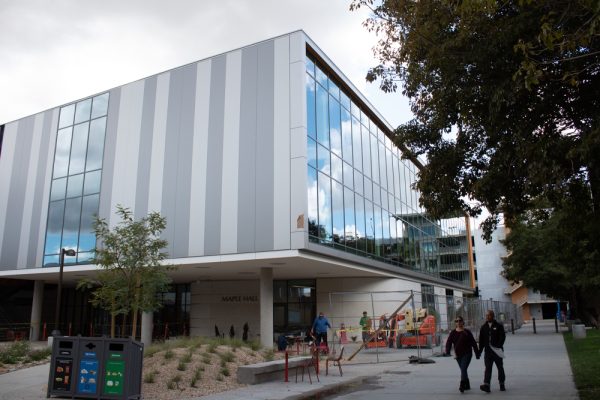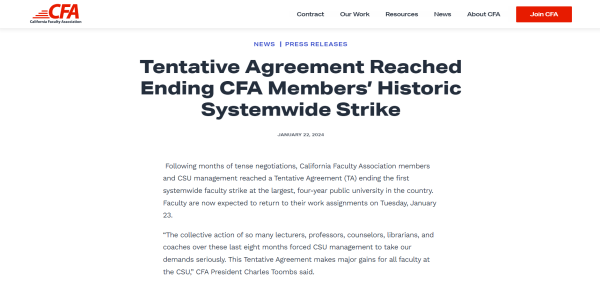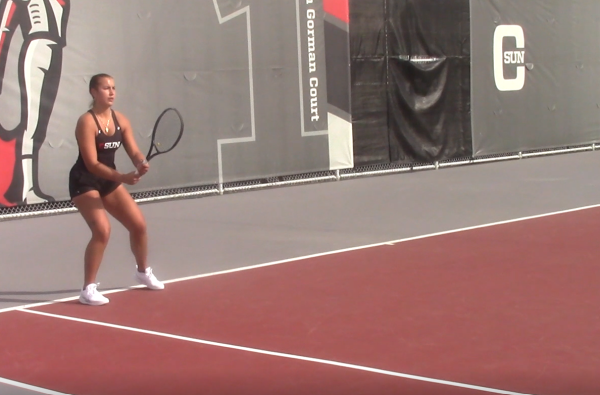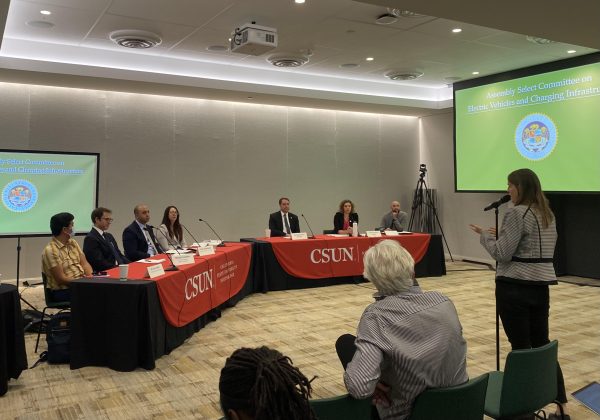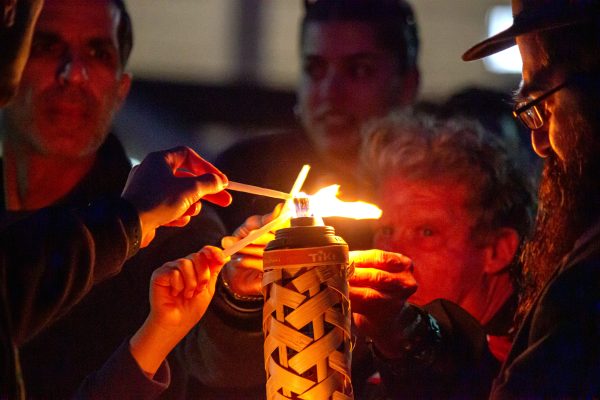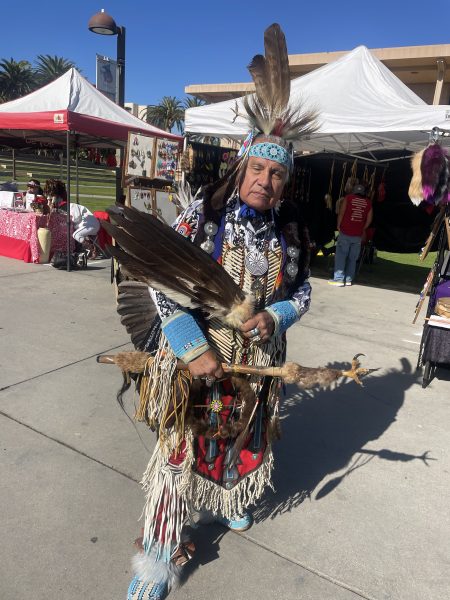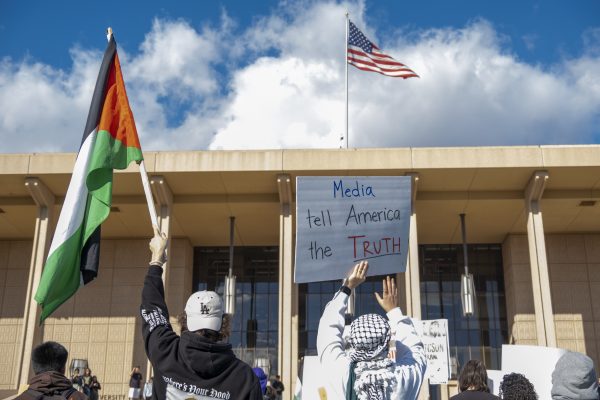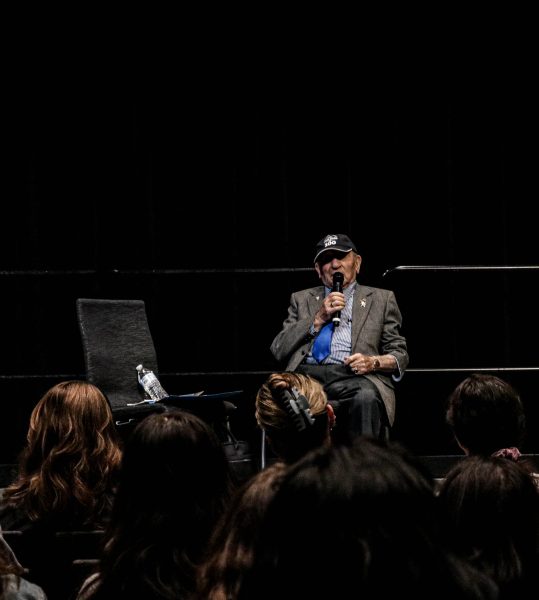Zoom Q&A with CSUN President Dianne F. Harrison
April 17, 2020
Below is a summarized version of the interview. It has been edited to fit a text format and is not a transcript.
What is the university’s protocol when it is made aware that a member of the CSUN community has tested positive for the virus?
We’ve established the practice of communicating with the campus community when there is health news that might affect CSUN students, faculty or staff in any way, and we follow the very strict protocols that the Los Angeles County Department of Public Health has outlined for us. They have guidance and protocols. We also have to be cognizant of individuals’ privacy, particularly as it relates to their medical condition and maintaining confidentiality for individuals. But at the same time, in terms of letting the campus know, we’ve had this experience. So we’ve only had this once and then, we were really attempting to be very transparent about what was happening at that time. And since then, the individual has recovered and we are very happy about that. So our protocol is to follow what the Department of Public Health says we need to do. And then also to notify our campus that this is going on, and what we’re doing about it.
Some universities around the country are preparing plans for remote or modified instruction in the fall. Is CSUN preparing alternative plans for the fall, and if so what do those plans look like?
You know, we have what we call a cross-functional team looking at the fall and what potential scenarios that we might engage in. Everything from continuing in a virtual world, where we keep as low density as possible, face-to-face contacts on campus, to maybe starting virtually and then depending on what the data shows us and what the public health officials tell us, what the mayor says, what the governor says, possibly moving into face-to-face later on in the semester and then some kind of hybrid-like if it’s possible. Again, all of this depends on what the guidance is and what the restrictions are at the time when we have to make these decisions. But that said, if it’s possible to gradually phase in some of the smaller classes or face-to-face instruction, so everything’s on the table where we’re really looking at everything. And clearly it is our most extreme desire that we return back to face-to-face in the fall if we can. And that “if we can” is a huge caveat, because we are not going to do anything that is going to jeopardize the health and safety of our students and our employees. So that’s number one and number two is “what can we do that will be in the best interests of our students,” for sure.
CSUN is set to receive a total of $44 million from the federal Coronavirus Aid, Relief, and Economic Security Act, half of which is designated for student support. What sort of system will be used to redirect that money to students and what will determine eligibility?
Half of that, as you say, will be directed to students. And we are currently working on finalizing the plans of our distribution process. And basically what we’re looking at is having a tiered system, if you will. The tiers are based on level of financial need. To put it simply: high, medium, low. So we have different types of needs within our student population. We know that we want to have an online, simple application. We know many of our students will qualify for this, but they’re going to have to opt-in to say, “Yes, I want to take advantage of this.” Basically, if a student was receiving financial aid this year in any form, they probably are going to be eligible for some of these funds. We also want to make allowances for students who perhaps didn’t qualify for financial aid originally, when our packages were put together, but in the interim, and because of this pandemic, their family situations have changed such that maybe both parents lost jobs or they lost their job. So they’re in a different financial situation today than they were last September or even in January. So we want to make allowance for students who weren’t eligible in the past for financial aid, but who also might have new financial needs at this time. Hopefully, we will be able to distribute these funds to students and they will have them in their hands literally or in their bank accounts by early May.
Chancellor White said that eight CSU campuses were looking at using their facilities to support potential overflow from local hospitals. Is CSUN doing this?
You know, all of the CSU campuses have offered one or more facilities, things like gymnasiums or empty residence halls for possible overflow for medical and health personnel. We have not been asked to use our facilities yet, so we’re just sort of on hold. A couple of other campuses, (Cal Poly) San Luis Obispo and Sonoma State, I’m aware that their facilities are being used in their area. I think a lot depends on where you’re located geographically, and so far, our hospitals have been able to not have this overflow yet. But as a state agency, we really feel like we have to do something to lean in to help the state if there was a need. But we have not been approached for that particular use thus far.
Some students are voicing their support for a partial refund on their tuition, arguing that the quality of education and access to student services have been compromised. Is the university considering something along these lines?
The CSU system position is that right now, because we are offering and providing students with full academic credit for these courses, and that’s part of the California education code, that we would not be providing any refund on tuition or what’s called mandatory fees. We have taken positions on some of our other fees that like housing, parking, meal plans and so on. We have provided refunds for those areas or are in the process of doing so. But in terms of the tuition and mandatory fees, we really are not going to be refunding any of that, because you are getting academic credit and that’s what you’re paying for. And for many of the other services that are part of mandatory fees, like the health center, for example, that’s still up and running. It’s still providing services and so we can’t very well refund that.
What steps are being taken to ensure people are still enrolling in the fall? Especially freshmen and new transfer students?
We always do what’s called outreach to prospective students. So once a student applies and is admitted, then we want to continue to maintain contact with them. So we’re doing a lot more aggressive outreach right now for prospective students. Our new transfer students, I was just told yesterday, seem to be up. They’re actually interested in attending and wanting to come to CSUN, which is great news. We’re still looking at the freshmen. They have a substantial number who have committed and said, yes, they want to come to see CSUN. It’s really important right now, particularly in this virtual world, to maintain communication with those prospective students and make sure that they really will end up showing up or coming and taking classes. You know, I’ve said this a couple of times to people during meetings lately. This is the absolute worst time to drop out of school. This is the worst time to interrupt your education. And I say that because, while the job market may not be that great, right this second, it will improve and it will mean once again that to do better, you’re going to have to have a degree. And so that’s what we really want. It’s not just our prospective students, the new freshmen and the new transfers, but it’s also our current students. We are really working hard and we want every student who’s here to stay here. Don’t give up. Hang in there. We’re here to help you. We really want you to succeed. And we want you to finish this semester to graduate. Whenever that day comes for you.

